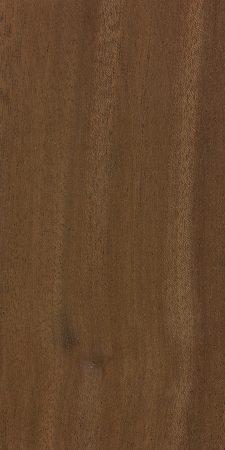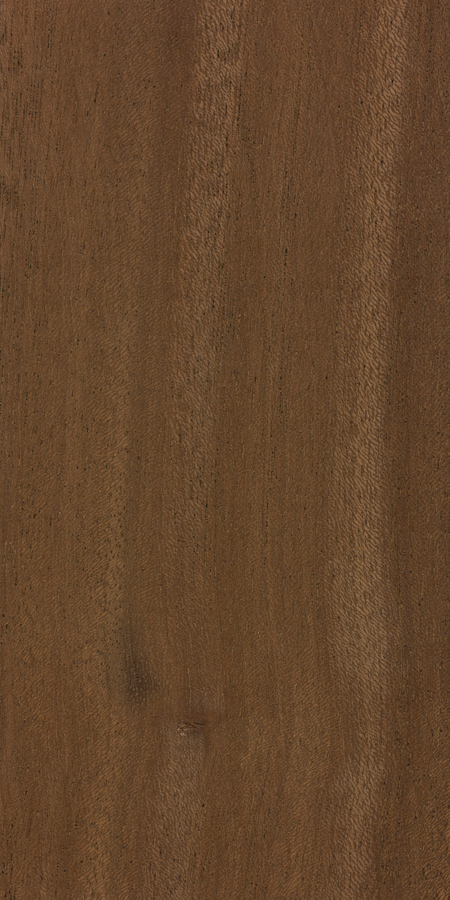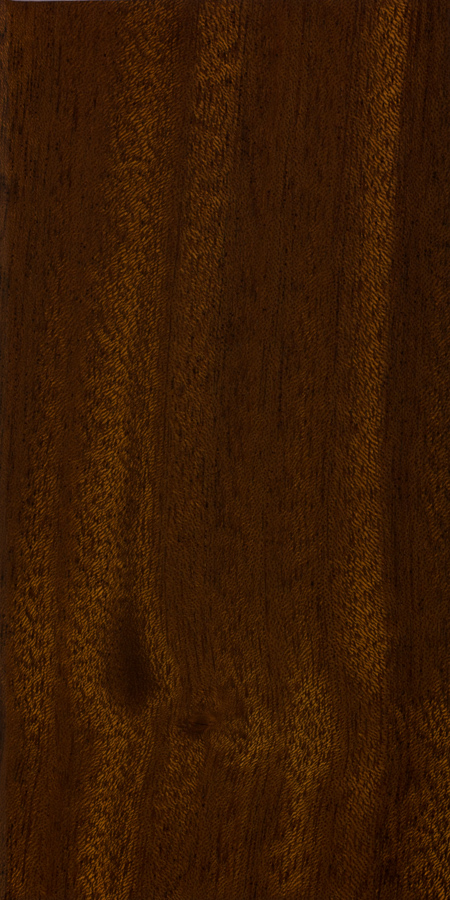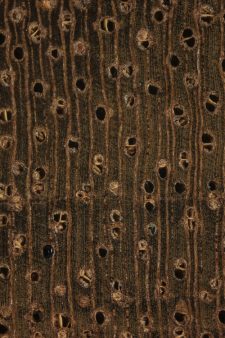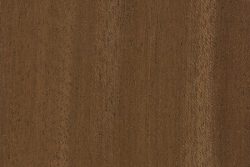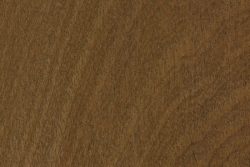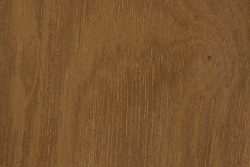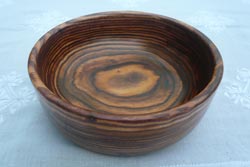DATA SOURCE(S): 1,5,8,14,20,36
Common Name(s): Kospio, omu
Scientific Name: Entandrophragma candollei
Distribution: West Africa, south to Angola
Tree Size: 100-155 ft (30-50 m) tall,
3-5 ft (1-1.5 m) trunk diameter
Average Dried Weight: 42.5 lbs/ft3 (680 kg/m3)
Specific Gravity (Basic, 12% MC): .58, .68
Janka Hardness: 1,130 lbf (5,010 N)
Modulus of Rupture: 13,440 lbf/in2 (92.7 MPa)
Elastic Modulus: 1,640,000 lbf/in2 (11.31 GPa)
Crushing Strength: 7,980 lbf/in2 (55.0 MPa)
Shrinkage: Radial: 4.6%, Tangential: 6.6%,
Volumetric: 11.3%, T/R Ratio: 1.4
Color/Appearance: Heartwood is a golden to dark reddish brown. Color tends to darken with age. Kosipo generally lacks the various grain figuring (quilted, wavy, etc.) that are more common in sapele.
Grain/Texture: Grain is straight to slightly interlocked, which can sometimes produce a moderate striped appearance. Uniform medium to coarse texture and good natural luster.
Rot Resistance: Rated as moderately durable in regard to decay resistance. Susceptible to dry wood and marine borers, with moderate termite resistance.
Workability: Unlike other Entandrophragma species, kosipo can contain up to 0.5% silica,[1]Louppe, D., Oteng-Amoako, A. A., & Brink, M. (2008). Plant Resources of Tropical Africa 7 (1). Timbers 1 (p. 236). PROTA foundation. and can have an increased blunting effect on cutters. However, the wood is overall easy to work, though pieces with interlocked grain can produce tearout in surfacing operations. Poor steam bending properties, but glues, stains, and finishes well.
Odor: No characteristic odor—lack of scent can be used as a diagnostic to separate it from sapele.
Allergies/Toxicity: Although severe reactions are quite uncommon, kosipo has been reported to cause eye and skin irritation. See the articles Wood Allergies and Toxicity and Wood Dust Safety for more information.
Pricing/Availability: Not commonly exported to North America, kosipo may occasionally be available as either figured veneer or as solid lumber. Expect prices to be in the mid range for an imported hardwood, though likely commensurate to the level of grain figuring present in the wood itself.
Sustainability: This wood species is not listed in the CITES Appendices, but is on the IUCN Red List. It is listed as vulnerable due to a population reduction of over 20% in the past three generations, caused by a decline in its natural range, and exploitation.
Common Uses: Veneer, plywood, boatbuilding, cabinetry, furniture, interior and exterior joinery.
Comments: Along with utile, kosipo occupies a space in the Entandrophragma genus almost completely eclipsed by the incredibly popular sapele (E. cylindricum). Here, the latter can feature some truly dramatic grain figuring (such as quilt or pommele) that the other species in the genus (like kosipo) just can’t match. Nonetheless, kosipo does bear a strong resemblance to mahoganies, particularly the heavier and darker Khaya species which are also native to Africa. Technically, both mahogany and kosipo are contained in the broader Meliaceae family, so the visual similarities are also supported by biology.
When dealing with veneer woods, much of a species’ reputation and value are derived from its perceived beauty. While the name may be lesser known, kosipo is a wood in good company, and if by chance a particular piece has attractive grain patterning, its relative obscurity ought not dissuade potential buyers.
Images: Drag the slider up/down to toggle between raw and finished wood.
Identification: See the article on Hardwood Anatomy for definitions of endgrain features.
Note: I believe the endgrain images above do not accurately represent this species, and I suspect that the source which provided me with this sample has incorrectly identified it—I currently suspect this is a sample of Khaya spp. These images are set to be updated with new sample.
Porosity: diffuse porous
Arrangement: primarily in radial multiples of two to three
Vessels: large to very large, few to very few; dark reddish brown deposits occasionally present
Parenchyma: diffuse-in-aggregates, unilateral, vasicentric, and banded
Rays: medium width, normal to wide spacing; rays are generally not visible without magnification
Lookalikes/Substitutes: There are a number of other commercial woods in the Meliaceae (mahogany) family that can bear a close resemblance to kosipo. The presence of parenchyma bands can help to differentiate between Khaya and Entandrophragma species, as Khaya typically will lack parenchyma bands altogether.
Notes: In contrast to sapele (E. cylindricum), kosipo lacks both the distinctive cedar-like scent and storied rays found in sapele. However, utile (E. utile) tends to have a fainter odor and can be difficult to separate from kosipo. Utile tends to have slightly more widely spaced parenchyma bands, also occurring in more broken or diagonal patterns. Additionally, ethanol extracts of both sapele and utile will fluorescence yellow under blacklight, while kosipo’s extracts will be non-fluorescent.[2]Richter, H.G., and Dallwitz, M.J. 2000 onwards. Commercial timbers: descriptions, illustrations, identification, and information retrieval. In English, French, German, Portuguese, and Spanish. … Continue reading
Related Content:
References[+]
| ↑1 | Louppe, D., Oteng-Amoako, A. A., & Brink, M. (2008). Plant Resources of Tropical Africa 7 (1). Timbers 1 (p. 236). PROTA foundation. |
|---|---|
| ↑2 | Richter, H.G., and Dallwitz, M.J. 2000 onwards. Commercial timbers: descriptions, illustrations, identification, and information retrieval. In English, French, German, Portuguese, and Spanish. Version: 9th April 2019. delta-intkey.com |

